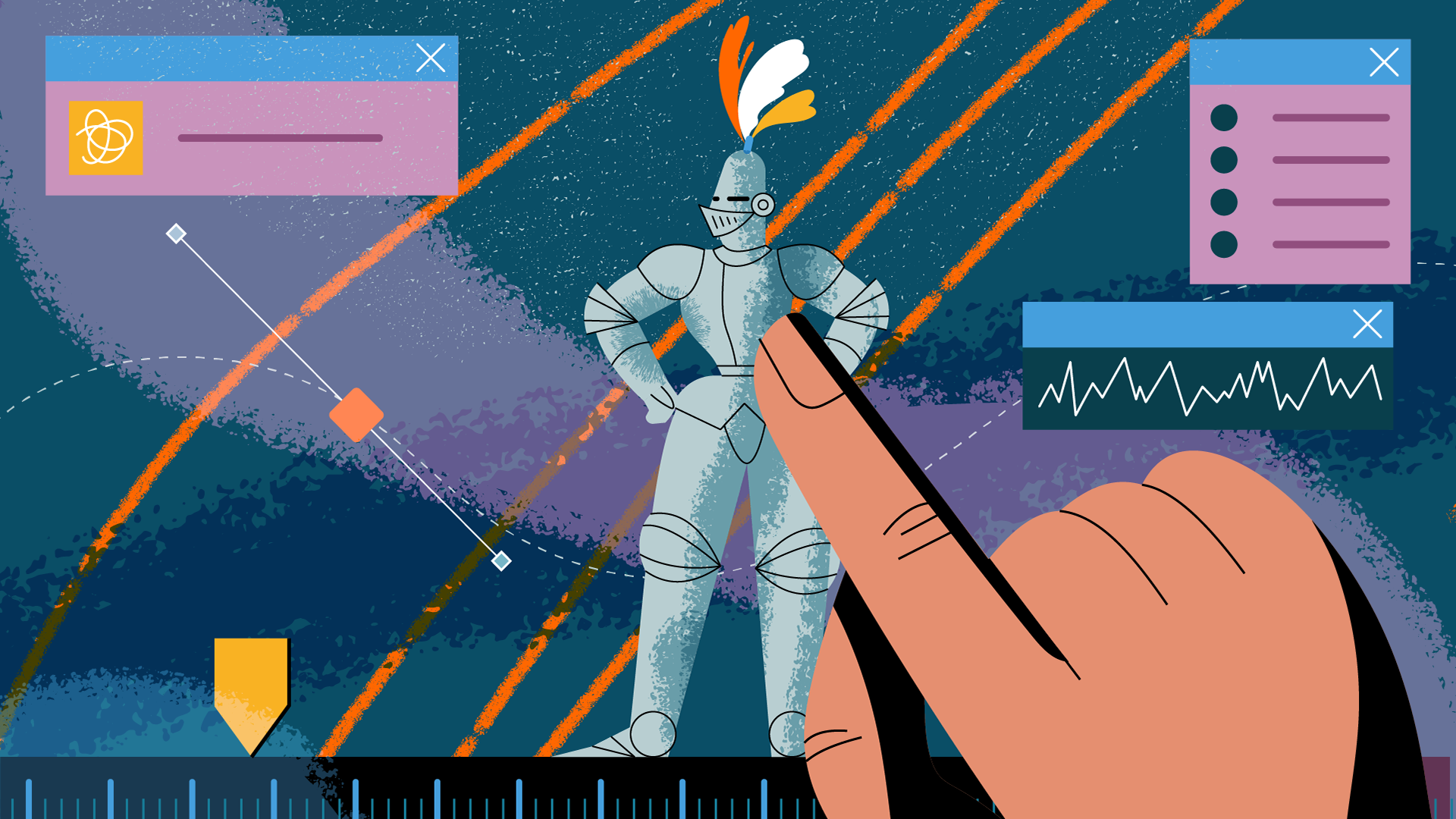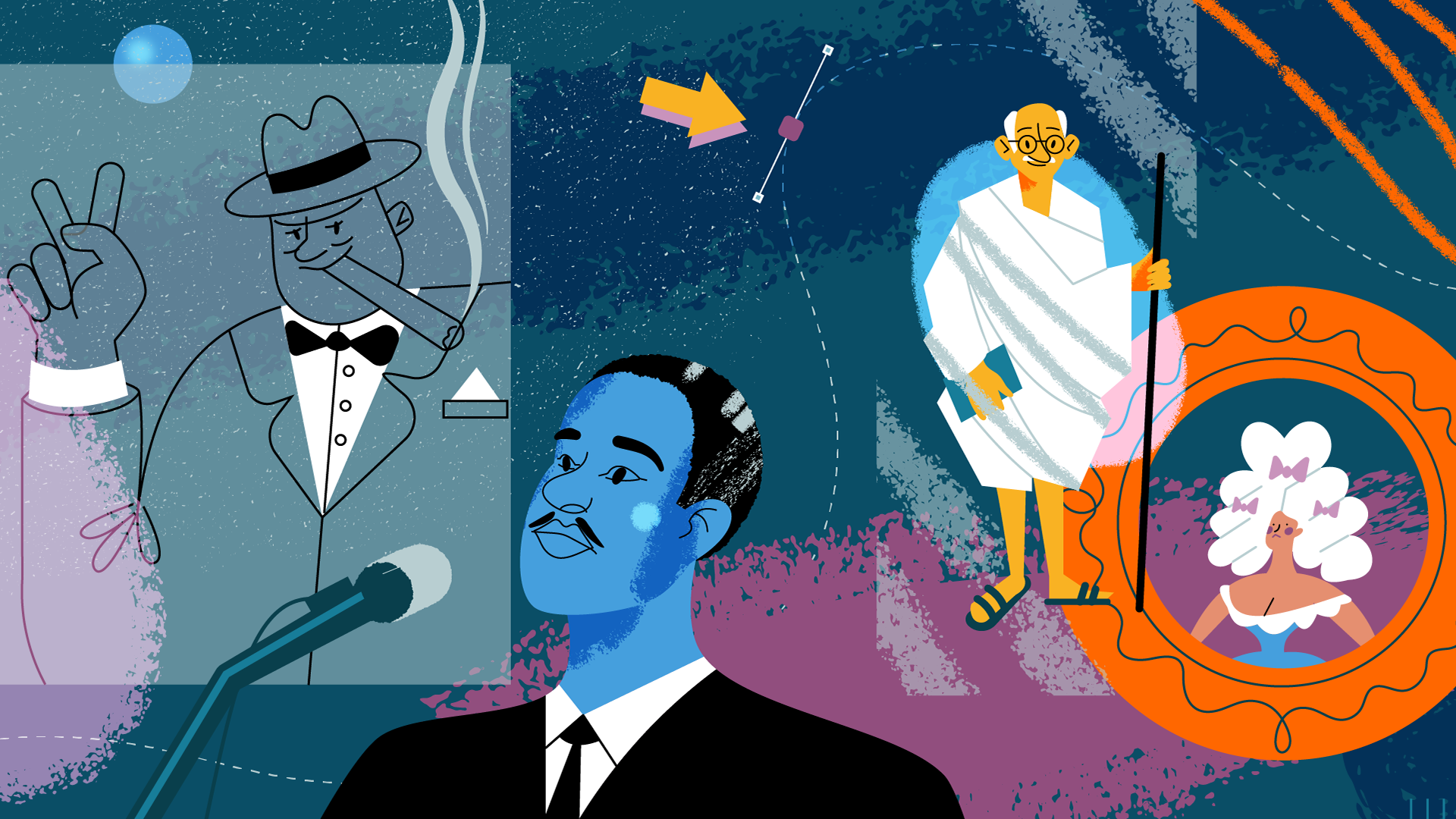Animation has an uncanny ability to breathe life into tales both fictional and factual. While we often associate animation with fantastical worlds and colorful characters, it’s a medium that has the power to illuminate history as well. In this article, we’ll embark on a fascinating journey into the realm of animated biographies, where the lives of historical figures are vividly and creatively depicted through the magic of animation.
The Creative Process: Crafting Animated Narratives
Storyboarding the Past: The Role of Visuals
The journey of creating an animated biography begins with extensive research into the historical figure’s life. Once the story is meticulously crafted, the animation process takes center stage. Storyboards, akin to the blueprints of animation, are employed to plan each scene and visualize how the narrative will unfold. This visual planning is crucial in ensuring that the historical context and the figure’s personality shine through in the animation.
Artistic Choices: Style and Aesthetics
Choosing the right animation style and aesthetics is paramount to capturing the essence of the historical period and the individual being portrayed. For instance, a biography set in ancient Greece might opt for a classical, hand-drawn style, while a modern figure’s story could be best told through sleek 3D animation. The artistic choices extend to color palettes, character design, and even the use of symbolism to convey deeper meanings.
Breathing Life into the Characters: Voice Acting and Sound Design
One of the defining elements of animated biographies is the use of voice acting. Talented actors lend their voices to historical figures, giving them not only speech but also personality and emotion. Coupled with meticulous sound design, this aspect of animation helps create a rich, immersive experience that transports viewers to different eras and contexts.
Beyond Facts and Figures: Storytelling with Heart
The true power of animated biographies lies in their ability to humanize historical figures. These animations go beyond the cold, hard facts of history books, delving into the personal struggles, triumphs, and vulnerabilities of the individuals they depict. By highlighting the emotional and human sides of these figures, animated biographies make history relatable and accessible to audiences of all ages.

Inspiring the Next Generation: Using Animated Biographies in Education
Education is not merely about imparting facts; it’s about inspiring curiosity and fostering a deep understanding of the world. Animated biographies have emerged as powerful educational tools that captivate and engage students while offering a unique perspective on history and the lives of remarkable individuals.
1. Making History Come Alive
History can often seem distant and abstract to students, filled with dates, names, and events that feel disconnected from their lives. Animated biographies bridge this gap by transforming historical figures into relatable characters. Through animation, students witness these figures’ challenges, triumphs, and personal journeys, making history more accessible and meaningful.
2. Visual and Emotional Learning
Visual storytelling is a potent educational tool. Animated biographies leverage the power of visuals to convey complex historical narratives in a format that resonates with young minds. The emotional depth and humanization of historical figures in these animations allow students to connect with the past on a personal level, fostering empathy and a deeper understanding of historical events.
3. Encouraging Critical Thinking
Animated biographies encourage critical thinking and analysis. Students are prompted to consider the motivations, choices, and impact of historical figures. These animations often depict the ethical dilemmas faced by these figures, sparking thoughtful discussions about morality and the consequences of one’s actions.
4. Multidisciplinary Learning
The appeal of animated biographies extends beyond history classrooms. These animations often incorporate elements of art, culture, science, and sociology, offering opportunities for multidisciplinary learning. Students can explore the broader context of a historical period or figure’s influence on various aspects of society.
5. Diverse Perspectives
Animated biographies also introduce students to a diverse range of historical figures from various backgrounds and time periods. This diversity promotes inclusivity and broadens students’ understanding of the rich tapestry of human history. It encourages them to explore stories from cultures and regions they may not have encountered otherwise.
6. Fostering Creativity
Exposure to animated biographies can spark creativity in students. As they learn about the lives of innovators, artists, and leaders, they may be inspired to pursue their own passions and dreams. The animated format itself can serve as a source of inspiration, encouraging students to explore animation as a medium of self-expression and storytelling.
7. Engaging the Digital Generation
In an age of digital media and screens, animated biographies align with the learning preferences of the digital generation. They capture students’ attention through visually stimulating and dynamic storytelling, making learning an enjoyable and immersive experience.
8. Encouraging Research and Projects
Animated biographies often pique students’ curiosity to learn more. Teachers can leverage this interest by encouraging students to delve deeper into the lives of historical figures through research projects, presentations, or creative assignments. This fosters independent learning and critical research skills.
9. Sparking Conversations
These animations often touch on universal themes such as perseverance, leadership, and the human spirit. They provide excellent opportunities for teachers to facilitate meaningful discussions on character traits, values, and the lessons we can draw from history to navigate the present and future.
10. Inspiring Future Leaders
Ultimately, animated biographies have the potential to inspire the next generation of leaders, artists, scientists, and thinkers. By showcasing the incredible achievements and contributions of historical figures, these animations encourage students to believe in their own potential to make a positive impact on the world.
Incorporating animated biographies into education enriches the learning experience, fosters a deeper connection to history, and empowers students to become thoughtful, engaged, and inspired individuals ready to shape the future. These animations serve as more than just educational tools; they are catalysts for personal growth, curiosity, and a lifelong love of learning.

Famous Examples: Successful Animated Biographies that Resonate with Audiences
“Persepolis” is a poignant and autobiographical animated biography based on the graphic novel of the same name by Marjane Satrapi. The film chronicles Satrapi’s coming-of-age journey against the backdrop of the Iranian Revolution. Through stark black-and-white animation, “Persepolis” captures the challenges, aspirations, and personal evolution of a young girl navigating a changing and politically turbulent Iran.
What sets “Persepolis” apart is its ability to depict the intimate and universal struggles of a young woman in a repressive society while also addressing broader themes of cultural identity and political upheaval. The film’s candid storytelling and relatable protagonist resonate with audiences of all backgrounds.
Directed by the renowned Hayao Miyazaki, “The Wind Rises” is a beautifully animated biography that pays tribute to Jiro Horikoshi, the visionary aircraft designer behind Japan’s World War II fighter planes. Miyazaki’s signature visual style and storytelling grace are on full display as he weaves a tale of love, ambition, and the clash between artistic dreams and the realities of war.
“The Wind Rises” excels in its portrayal of the creative process and the personal sacrifices made in pursuit of one’s passions. The film’s dreamlike sequences and lush animation make it a captivating and emotionally resonant experience.
“Frida” is a biographical animated drama that explores the life of the iconic Mexican artist Frida Kahlo. While not entirely animated, the film incorporates animation sequences that mirror Kahlo’s own artwork, blurring the lines between reality and her vivid imagination.
The use of animation in “Frida” adds a surreal and dreamlike quality to the storytelling, allowing viewers to immerse themselves in Kahlo’s unique perspective on life, love, pain, and art. Salma Hayek’s powerful portrayal of Frida Kahlo further elevates the film’s emotional impact.
Based on Kahlil Gibran’s timeless philosophical book of the same name, “The Prophet” is a beautifully animated biography that combines breathtaking visuals with profound wisdom. The film weaves together multiple animated segments, each exploring a different facet of life’s fundamental truths.
What sets “The Prophet” apart is its ability to distill complex philosophical concepts into visually stunning and emotionally resonant stories. Through the animation of various parables, the film offers profound insights into love, freedom, work, and the interconnectedness of humanity. It’s a testament to the power of animation to convey deep philosophical ideas in a way that’s accessible and thought-provoking.
5. “The Boy and the World” (2013)
“The Boy and the World” is a Brazilian animated biography that tells the story of a young boy’s journey to find his missing father. What distinguishes this film is its visually striking and imaginative animation style. The entire narrative unfolds as a vivid and surreal dreamlike adventure, where the boy encounters a world filled with both beauty and harsh realities.
This animated biography doesn’t rely heavily on dialogue but instead utilizes its visual and auditory elements to convey emotions and themes. It invites viewers to interpret the story from their own perspectives, making it a unique and immersive cinematic experience.
“The Illusionist,” directed by Sylvain Chomet, is a charming and melancholic animated biography that explores the life of a struggling magician in the changing landscape of post-war Europe. The film’s hand-drawn animation style lends a timeless quality to the storytelling, emphasizing the magic of cinema itself.
What makes “The Illusionist” exceptional is its ability to communicate emotions and relationships through subtlety and nuance. It’s a testament to the power of animation to convey complex human experiences, even in the absence of extensive dialogue.
Conclusion
When brought to life on the big screen, real people’s biographies become colorful strands in the fabric of our past. Animated biographies weave narratives that connect us to the past in significant and meaningful ways via rigorous research, artistic choices, and storytelling prowess.
The more we delve into the lives of historical characters through animation, the more we learn about the commonalities that unite us and find fresh sources of motivation, insight, and gratitude for our ancestors.